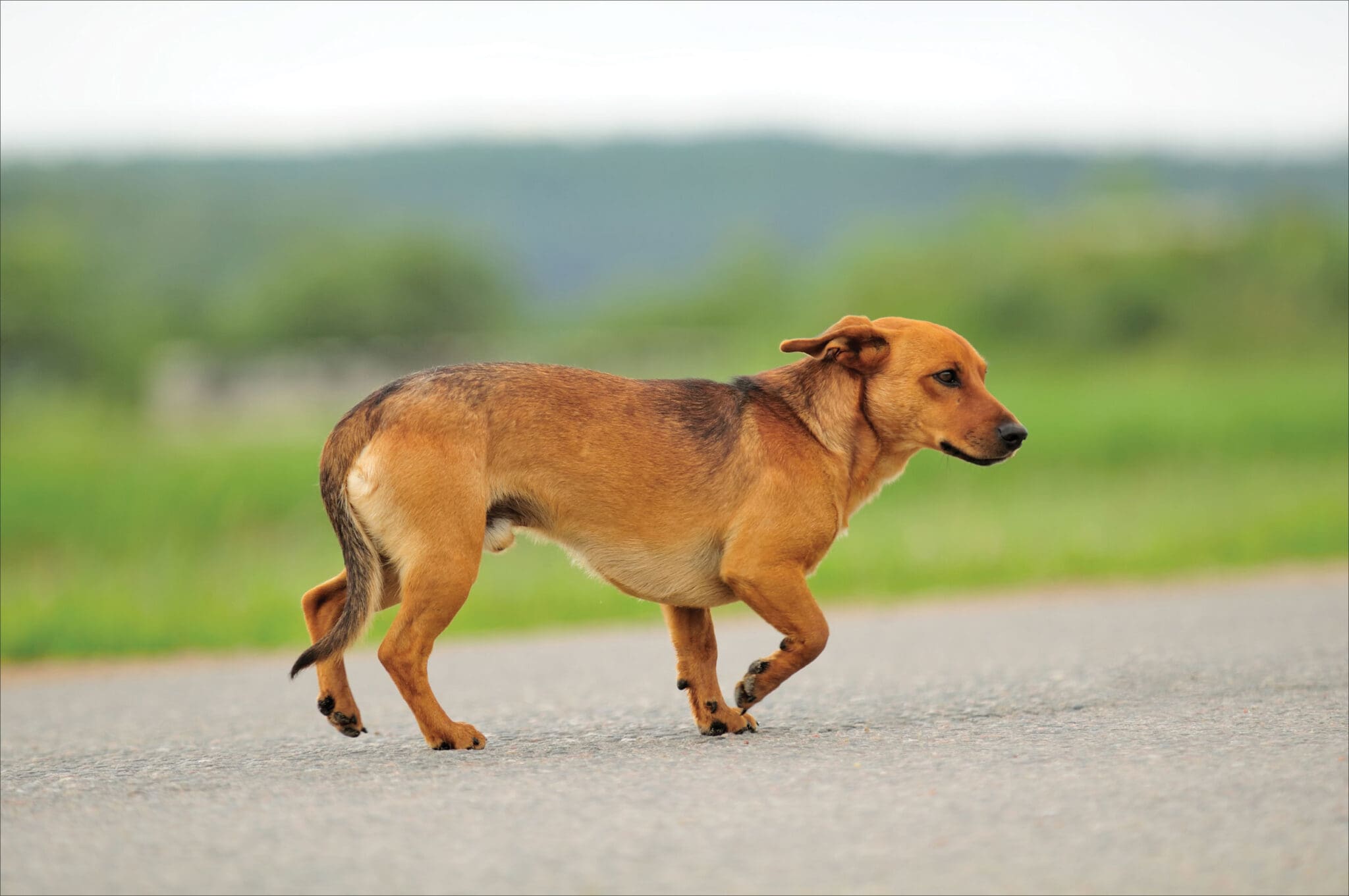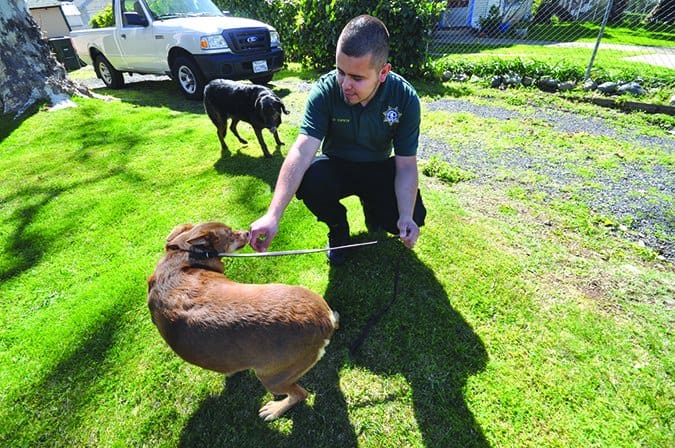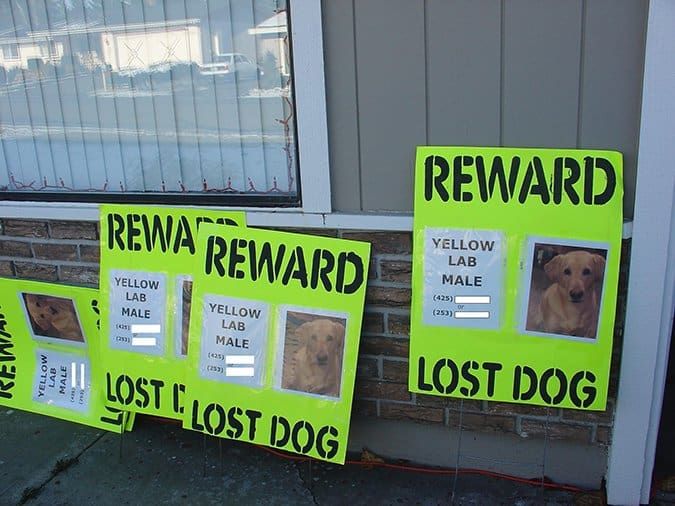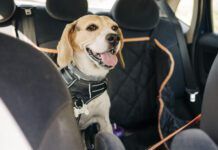Generations ago, the assumption was that Lassies just simply came home. They may have meandered, they may have wandered, but for the most part, a dog on the loose wasn’t something anyone batted an eye at.
Today, of course, that’s all changed. In many parts of the country, a more diligent dog culture – and increased compliance with leash laws – has ensured that the majority of companion dogs are safe behind secure fences, or inside houses or kennel runs when their owners cannot supervise them. When you do see a dog trotting around the neighborhood, the assumption is that he has escaped or was dumped, and is lost and/or imperiled. And the first impulse of most “dog people” is to try and catch him, before he wanders into traffic or another equally life-threatening situation.

Of course, like people, dogs have different personalities. Gregarious, well-adjusted dogs are typically easy to catch; they’ll just amble up to you, tail a-wagging, and the game is over. But other dogs may be insecure, timid, reactive, or undersocialized, and for them the experience of being out in the wide, wide world can be extremely disorienting, if not downright terrifying. In these cases, catching a panicked dog is something of an art. You need to know what will spook her, what will soothe her, what precise move you need to make, and when to make it.
Here are some dos and don’ts for landing a lost dog back home, safe and sound. And that applies to both of you.
DON’T Grab
This really is common sense, but sometimes, in the excitement of trying to secure a dog on the loose, instinct takes over – with unfortunate results. Consider a news report from January, in which a California woman attempting to rescue a pit bull from an interstate ramp in West Sacramento grabbed for the dog and got badly bitten in the ear.
Suffice it to say that that’s a blueprint for how not to capture a loose dog: Don’t make sudden moves, and don’t try to immobilize a loose dog by clutching him to your bosom. That lady would have been better off opening her car door and trying to entice the dog to jump in, using the vehicle as a “trap” of sorts until help could be summoned.
“If you lunge, dogs may bite because they’re afraid,” says Bonnie Folz of Howard Beach, New York. She first got involved in finding lost dogs with the case of Vivi the Whippet, the dog who famously found herself loose on the tarmac at New York’s John F. Kennedy Airport on the way home from competing at the Westminster dog show in 2006. Vivi was sighted for months, but never caught. Folz was inspired to continue helping owners of lost dogs, especially lost sighthounds, which can quickly turn feral when on the lam.
DON’T Chase
You’ll need to override your biological programming here: It’s human nature to run after something you want. The problem is, the dog will likely run even faster, sometimes directly into danger – in particular, oncoming traffic. When trying to catch a lost dog, often less is more.
The same applies if you see a dog wandering in traffic, in particular a highway or busy road: Don’t jump out. Instead, put on your flashers and follow the dog as best you can, provided you do not create a traffic disturbance. Or pull over somewhere safe, and call highway patrol to see if an officer can assist in stopping and slowing traffic. Bottom line: Don’t take any chances in getting hit yourself.
DON’T Talk
It is incredibly counterintuitive, when you see a loose dog, not to call to him, slap your leg encouragingly, or otherwise send an auditory signal that you are happy to see him and would like him to get closer. But that’s exactly what you shouldn’t do, says Kat Albrecht, a police officer turned pet detective from Federal Way, Washington, who founded the non-profit Missing Pet Partnership in order to help communities develop services to find lost companion animals.

“When dogs are flooded with adrenaline, they are very reactive, and they make associations with things,” she explains. “The first person who encounters a lost dog might call the dog or pat their leg or whistle, and if the dog is already in that fight or flight mode, he will likely panic.” The dog may then associate those overtures with something frightening and overwhelming, and bolt whenever he hears them, even if it’s his owner who makes them; he may simply react without processing any of that information.
DO Use Calming Signals
On Talking Terms with Dogs: Calming Signals, the 2005 book by Norwegian dog trainer Turid Rugaas, popularized the concept of mimicking the body language that dogs use to communicate peaceful intentions, avoid conflict, and defuse tension.
Calming signals include yawning, using peripheral vision and blinking (never long, direct stares), and oblique approaches (moving from the side, not head on).
You’re not very likely to catch a dog if you are moving toward him in a direct line, standing ramrod straight and staring at him. “What you’re doing with this is mimicking a predator,” Albrecht says.
DO Go “Low and Slow”
The key, Folz explains, is to get down to the dog’s level, and be extremely patient. She recalls a friend who has Pharaoh Hounds who once spent three long hours sitting nearly motionless in a field before a dog who had escaped at a nearby show decided to go over and check him out – and try his treats.
Albrecht also recommends dropping to the ground, then faking indifference. Her favorite move is to pull out a bait bag that makes a lot of noise when touched – crinkly potato-chip bags filled with hot dogs are a favorite – and pretend to indulge in a movable feast, dropping morsels on the floor all the while.
“Say ‘Nummy, nummy,’ and make lip-smacking noises – that’s a universal language to a dog,” Albrecht says. “If you focus on a hot dog you dropped on the ground, and maybe act like you’re eating food off the ground, right away their guard drops because they think you’re not even watching them.”
Albrecht recommends sitting down, or even lying down flat with the food on your stomach, and watching the dog only from your peripheral vision – again, no staring. “It could take 45 minutes to an hour, or longer, for the dog to advance toward you,” she says. If they get close enough at this stage, some dogs will catch the scent of a familiar person and “go through an immediate recognition,” Albrecht says. “Owners describe case after case where a dog starts whining and wagging his tail” after recognizing “his” human at long last.
What To Do If The Lost Dog Is Yours
When a dog goes missing, time is of the essence: Not only can canines cover a lot of ground in a day, leaving them miles away from where they were separated from their humans, but there’s also the risk that a “Good Samaritan” will pick them up and transport them who-knows-where.

Here are some lesser-known but highly effective tips for raising awareness about your lost dog, and generating leads and sightings:
Tag Your Car
Dog rescuers have discovered that turning their cars into moving billboards spreads the word about missing dogs quickly and effectively. Use fluorescent neon markers to draw the most attention. (Albrecht recommends the ½-inch broad-tip
“Neon Car Glass Markers” from neoplexonline.com.) Because the letters need to be three to four inches tall for maximum legibility, Albrecht recommends a maximum of four lines, each in a different color, containing three key pieces of information: the breed or dog description; the location (city, intersection, or neighborhood name), and your phone number.
Circulate a Flyer
Again, Albrecht recommends you go neon here, too: Those plain white sheets of copier paper are easy to overlook. Instead, post the flyers on oversized neon poster paper and place them at major intersections where your dog has been lost or sighted.
As with the car tagging, Albrecht recommends that you make certain words highly visible: Ideally, five words in big type, so that they can be processed in five seconds by passersby. (Additional information can be provided in smaller type.) At the top of the neon poster, put “Reward” in big block letters; at the bottom, the words “Lost Dog.” The flyer should be taped in the middle of the poster in a clear plastic sheet protector for weatherproofing; there should be a photo of the dog in the center and words describing the dog’s breed, appearance or color (“White Greyhound,” “Rottweiler Blue Collar”).
Put the neighborhood on speed dial. Anyone who searches for lost dogs knows that it’s important to place flyers prominently at local businesses and other locations that get lots of community traffic – such as local parks, bus stops, the post office, and grocery and convenience stores. But it’s often impractical (and in some municipalities, illegal) to leaflet private homes. Which is where neighborhood robocalls can come in handy.
Services such as FindToto.com act as “Amber Alerts” for missing dogs, computer-dialing homes in a designated area and playing a recording about the missing dog. Make sure the service is reputable and has a high rating with the Better Business Bureau, as scams in this field are not uncommon.
Keep your team synchronized. These days, many people have smart phones or tablets, and are able to harness technology such as mapping to help with a search. The pet-recovery website helpinglostpets.com allows you to coordinate search teams to target your efforts and optimize your results.
Denise Flaim of Revodana Ridgebacks in Long Island, New York, shares her home with three Ridgebacks, 10-year-old triplets, and a very patient husband.







All good advice if you’re young. I’m 60. I cannot lay on the ground and then get up . Much less have a hot dog in my car at any moment to try and save a stray dog. Unrealistic unfortunately. I love animals and can’t believe people just dump them on the street or highway. They are cruel and heartless people. The Lord and Karma will catch up to those bastards.